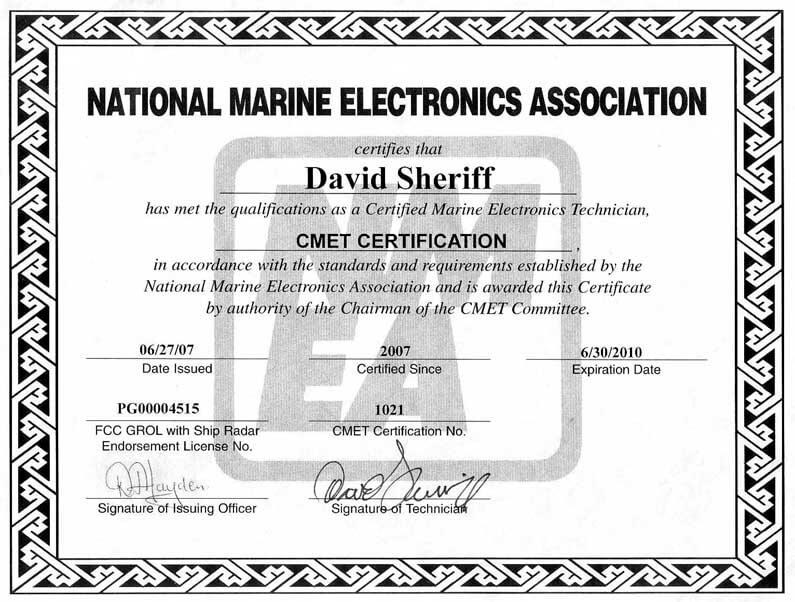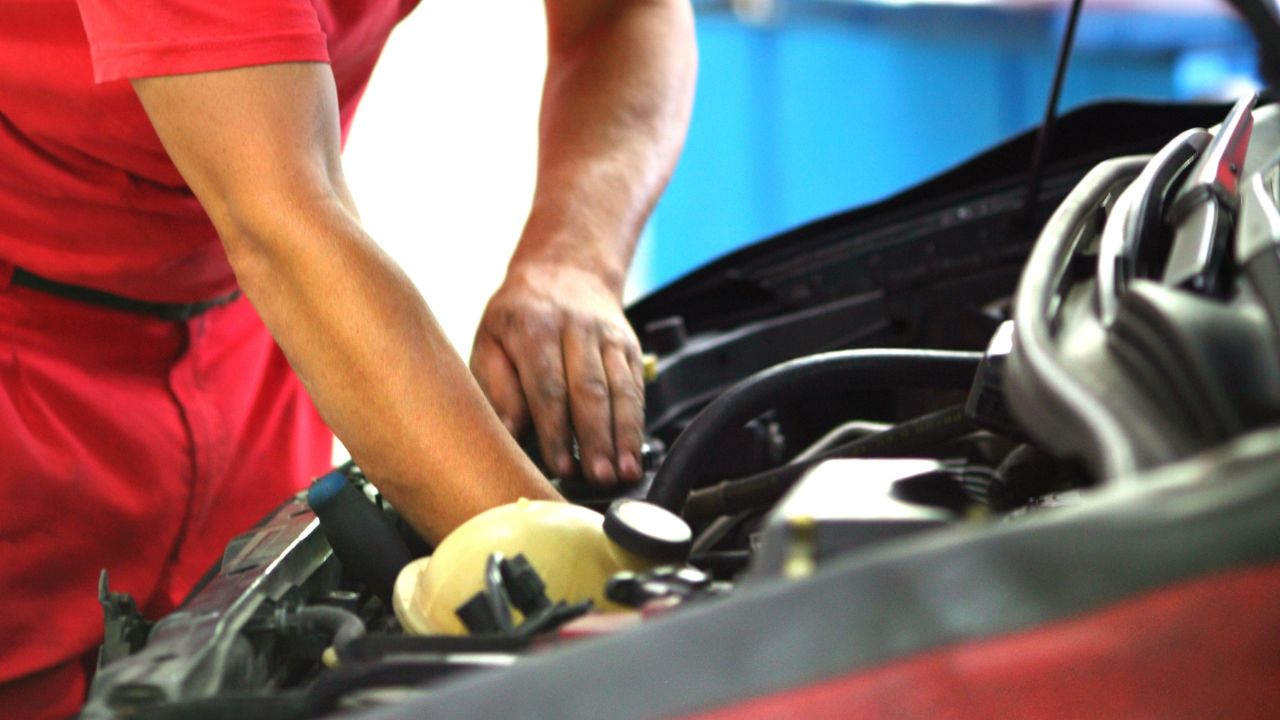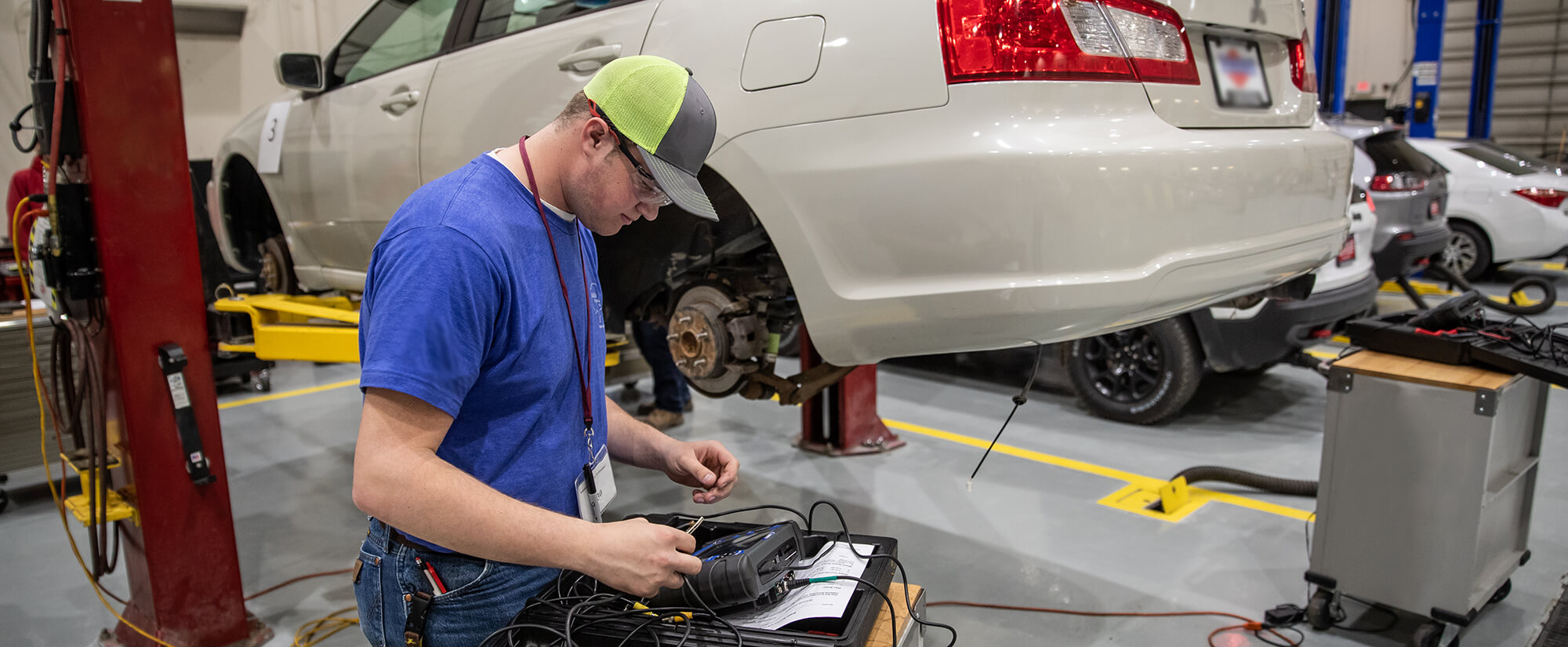
Understanding the parts of your vehicle is important if you wish to be able to comprehend them. These include the Coil springs as well as Shock absorber, Drive axle, Carbureted engine, and Drive axle. Let's take an in-depth look at these terms so you can understand what they mean. This article will also cover some terms that you might hear about in the automotive industry. You can read on to learn about the parts of your car. There are many terms in the automotive world that you may not know.
Coil springs
A coil spring is a piece of metal that is tightly wound and is mounted around a suspension system. The manufacturer can make it either hard or soft, and the performance of the coil spring is affected by a variety of parameters. Any change to any one of these parameters can affect vehicle handling and dynamic performance. The higher the spring's coil count, the better it performs. This spring is an essential component of a suspension system. It is crucial in determining how smooth your ride is.
Shock absorber
Shock absorbers are devices in cars that dampen the force caused by rough surfaces and improve the car's handling. They are made of different materials, which vary in their ability to deform. These devices also have different resistances to environmental pollutants and temperature variations. It might sound complicated but shock absorbers are actually quite easy once you learn how it works. There are different types of shock absorbers available, which are designed to handle various types of road conditions and different kinds of vehicles.

Drive axle
The drive shaft (also known as the "drive axle") is the main component of a car’s engine. Many drivers think they can fix the problem themselves. However, qualified mechanics are required to properly diagnose the issue and provide an efficient and safe solution. Before you bring your car to a shop, be sure to review the warranty for your drivetrain. Be aware of any unusual sounds or fluid leaks coming out of the drive axle. Be aware of your vehicle's weight limit. Overloading the car could cause damage to your drive axle.
Carbureted engine
Carbureted engines, also known as gasoline-powered engines, are those that use a wick or other means to draw air into a combustion chamber. The combustion process begins when fuel vapors enter the chamber. Modern carburetors use the Bernoulli principle, where air flows through a small venturi to deliver fuel in proportion to the amount of air that enters the cylinder.
Dash top sensor
Automotive technology is often called "dashtop sensors". These sensors measure the amount of brake fluid in the car. The brake fluid of a car has a pressure range within which it can function optimally. This sensor monitors that pressure and transmits that information via an electric voltage to the dashboard. If the level of brake fluid changes, the sensor will turn off the switch, and you'll be alerted through a warning light on the dash.
Slip coupling is limited
In the automotive world, the term "limited-slip coupling" can have many different meanings. In an automatic all-wheel-drive system, the limited slip coupling engages the secondary axle as needed. This mechanism relays information to the vehicle’s computer and controls its driving characteristics. It also acts as a conduit for coolant between engine's cooling system, and heater core. Its importance can be best illustrated with the following examples: free-running RPM (engine RPM without accessories off), ignition timing and the engine's free-running temperature.

M85 Blend of 85% gasoline and 85% methanol
M85 is a fuel blend made up of 85% methanol and 15% gasoline, which costs the same as mid-grade gasoline in California. Modern vehicles are flex-fuel vehicles and use this mixture. They also have a sensor to detect methanol. This sensor tells vehicle's computers what fuel they are using so they can adjust their ignition and injectors accordingly.
FAQ
How long is an automotive mechanic apprenticeship
It takes approximately three years to complete an automotive mechanic apprenticeship. This includes two years in school and two as an apprentice. The first year teaches you all aspects, from theory to practical skills and safety procedures. You'll also learn how tools can be used safely and efficiently during this year. After completing the first year, you'll then spend another year on-the-job training where you'll gain experience in different areas of the trade. You will have the opportunity for formal training during these years.
The final year of the program is spent gaining qualifications and becoming certified in the field. These include NVQs, which are obtained after passing industry-specific exams. Additionally, HNCs are Higher National Certificates that cover general subjects such management, customer service, and business administration. For those interested in pursuing certain trades, City & Guilds certificates are available.
Is it possible to work as an automotive mechanic?
It can be done. Many garages have vacancies that are advertised online. Many people apply because they think it will be fun. Try applying to a few jobs and seeing if the garages accept student applications. Ask your friends and family to recommend anyone in the field. They might be willing to recommend someone.
Is a career in automotive mechanic promising?
Automotive is an exciting industry filled with opportunities for people who are committed to excellence. It is important to work hard and learn as much from others as you can in order to succeed in this industry.
You'll need to have excellent communication skills because you'll spend most of your time talking to customers and other employees. It's important to be flexible and willing to travel. This will make commutes difficult.
If you are interested in a career working in automotive, then consider attending classes at community colleges. Many schools have programs that are specifically tailored for students who are interested in automotive sales, repair, and customer service.
Studying mechanical engineering is an option if you're interested in pursuing a degree. A bachelor's degree can be obtained in four years.
Many companies will also hire graduates right out of school. So it's wise to start looking for employment while you still have the chance to study part-time.
After you've finished your education, it's likely that you'll need to go through some training before you can be hired as an auto technician.
You will need to pass the Automotive Service Excellence certification exam. This test covers topics such engine maintenance as brakes, steering, suspension, etc.
After passing the ASE test you can apply for a National Institute for Automotive Service Excellence (NIASE) license.
Private individuals can have their vehicles repaired with a license. You'll be paid based upon the number of services provided.
It's important to note that not all states require licensing. You will need a license if you want to work in a different state.
Some states don't issue licenses until after completing a certain amount of training. This may be the case for you.
What length is an automotive course?
An automotive course lasts 3 years.
The first year focuses on theory and learning about cars. The second year is dedicated towards practical training. This includes learning how to drive, fix engine problems, and doing other maintenance jobs around your car. The last year is spent at a local shop, where you will get practical experience with real-world problems.
Statistics
- 52% of Mechanics in the United States think their salaries are enough for the cost of living in their area. (indeed.com)
- The U.S. Bureau of Labor Statistics (BLS) reports that the job outlook for automotive service technicians and mechanics is expected to decline by 4% from 2019 to 2029. (indeed.com)
- According to the BLS, the median annual salary for automotive service technicians and mechanics in the United States was $44,050 in May 2020. (uti.edu)
External Links
How To
How to properly diagnose your vehicle for repair
Before you can determine if your car requires repairs, it's important to first analyze the symptoms. Follow these steps to properly diagnose your vehicle.
-
Check engine lights. You should inspect the dashboard lights, such as the engine light indicator and the oil pressure gauge. Also, check the battery light indicator. If they have been flashing for more days than usual, it could be a sign that something is wrong with the vehicle.
-
Pay attention to the treads on your tires. Tires can become worn and cause problems in handling and braking. You should inspect the treads on your wheel. They should be clean and smooth. The best way to do this is to remove the wheels and take them off. Use a flashlight to see how well the treads are worn.
-
Monitor the level and consistency of your brake fluid. You must always monitor the level of your brake fluid. This will ensure your brakes function properly. If the brake fluid level is low, your brakes might fail when you apply pressure to them.
-
The suspension system should be tested. It is common for vehicles to have a suspension system which absorbs shocks or vibrations. This suspension system provides greater control and smoother acceleration and deceleration. You might notice a wobbly feeling or uncontrollable shaking in your vehicle if it has a problem with its suspension. To determine whether your vehicle may have a suspension issue, you can try to put weight on the rear or front axle and watch the movement.
-
Take a look at the steering column. The steering column connects the steering wheel to all other components of the vehicle. Steering columns can be damaged by accidents. Replace it if your steering column feels loose or unsteady.
-
Observe the exhaust pipe. The exhaust pipes are responsible for moving gases from the combustion chamber into the atmosphere. If your exhaust pipe leaks or cracks, it will allow harmful fumes into your cabin. You should also fix any bent tailpipes immediately.
-
Look under your hood. Take a look underneath the hood to find any strange or unusual items. Leakage of fluids in your engine could indicate that it is leaking. A professional technician should be contacted if your engine compartment emits an unusual smell.
-
Check the air filter. The vehicle's outside environment may cause the air filter to collect dust and debris. Vehicles that have a dirty air filter will not run well. Replace your air filter regularly.
-
Make sure you check the fan belt. Your vehicle's fanbel connects the engine and transmission. The engine will not turn if the fan belt breaks. It is very easy to replace your belt. You will need a screwdriver, pliers and a pair of pliers.
-
The radiator hose and hoses should be checked. The radiator-hose carries water to the engine. If it becomes cracked or damaged, it can leak hot liquid onto the engine. To repair the hose, you will only need to use a pair needle-nosepliers and a wire brush.
-
Make sure you have the windshield wipers checked. Windshield wipers work by using electricity to remove rain and snow. If they stop working, they could leave streaks on your window glass. Change the washer fluid to fix the problem.
-
Make sure you check the cables. The battery cables provide power for the electrical systems in your car. If you are replacing batteries, disconnect the negative cord first. Failure to do so can damage your alternator.
-
You should check the headlights. The headlights provide illumination for the road ahead. Poor visibility can result if the headlights don't function properly. To determine if your bulbs are out of date, check them.
-
Always check your lights. You can warn other drivers if you approach them at night. You may be distracted by the light and end up in an accident.
-
Check the brakes. Before you collide with another vehicle, brakes will slow down the car. You could lose control of the car and cause a crash if they don't work properly.
-
Change the oil. Oil keeps your engine lubricated. It prevents metal parts from rusting too quickly. It is recommended that you change your oil at least once per month.